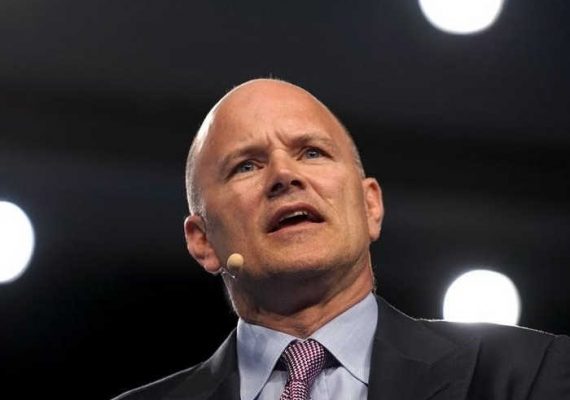Brian Armstrong, the CEO of Coinbase, the world’s largest cryptocurrency brokerage, wallet, and exchange, stated that major corrections are beneficial for the cryptocurrency market because bubbles eliminate speculators and investors who are in the market solely to generate massive short-term gains.
“When there is hype, people are irrationally exuberant,” said Armstrong. “When there is despair, people are irrationally pessimistic. Neither is true. Reality is always somewhere in the middle, more correlated with real usage (transactions per day) than the price. After many years of this, I’ve come to enjoy the down cycles in crypto prices more. It gets rid of the people who are in it for the wrong reasons, and it gives us an opportunity to keep making progress while everyone else gets distracted.
Armstrong, who has been leading institutional investors into the cryptocurrency sector by developing a suite of institutional digital asset products in collaboration with hedge funds such as Multicoin Capital, echoed the stance of billionaire investor and former Goldman Sachs executive Mike Novogratz, who also noted that similar to the Dotcom bubble in the 1990s, the cryptocurrency market will have large bubbles and corrections along the way.
“The crypto industry is like no other I’ve seen–lots of up and down cycles (reaching a new plateau each time). There have been three or four of these now. It can be scary for the first time you see it, but to us who have been in the industry for many years, it feels like old news,” Armstrong added. “We use the down cycles to build a strong foundation so we can thrive in the next growth cycle.
Why do Large-Scale Companies and Projects Use Down Cycles to Build?
One year ago, Vitalik Buterin, the creator of Ethereum, admitted that the rapidly increasing market valuation of the Ethereum network had placed significant pressure on both developers in the open-source Ethereum community and from commercial projects.
“I think the success that Ethereum has seen is definitely putting a lot of pressure on the core developers of the actual protocol of the platform to step up and deliver on the admittedly high expectations that the community has of us. That’s an expectation that we’re eager to see if we can match,” Buterin told Bitcoin Magazine in an interview.
In bull markets, especially during bull rallies in the cryptocurrency market, the market valuation of commercial companies, public decentralized blockchain networks, and blockchain projects tend to rise exponentially. For instance, in 2017, one of the biggest bull markets in the history of the cryptocurrency market, the value of Ethereum increased by 20837 percent or 209-fold, from $640 million to $134 billion.
Ripple (XRP), which struggled to sustain momentum at the $200 million region, rose from $230 million to $141 billion, increasing by 61204 percent or 613-fold.
When the valuation of blockchain projects and businesses spike up abruptly by absurdly large margins and five-digit percentage gains, it becomes virtually impossible for developers to cope with the trend and justify the increase in valuation of the project.
In late December, when the valuation of the cryptocurrency market achieved $500 billion, still far away from its peak at $900 billion, Buterin questioned the valuation of the market and asked both developers and investors to ask the question: has the cryptocurrency industry done enough to justify a valuation of $500 billion?
“So total cryptocurrency market cap just hit $0.5 trillion today. But have we earned it? How many unbanked people have we banked? How much censorship-resistant commerce for the common people have we enabled? How many dapps have we created that have substantial usage? Low added value per user for using a blockchain is fine, but then you have to make up for it in volume,” Buterin asked the cryptocurrency community.
After evaluating the market and various other indicators including the usage of smart contracts, the utilization of payment networks, and the deployment of micropayment networks, Buterin said that the cryptocurrency market has not done enough to justify the valuation of $0.5 trillion, and encouraged the community to continue building to add value to the ecosystem.
“The answer to all of these questions is definitely not zero, and in some cases it’s quite significant. But not enough to say it’s $0.5T levels of significant. Not enough,” Buterin concluded.
Bear markets can be considered as platforms for developers to build innovative solutions and improve the existing infrastructure around blockchain projects to support the next bull rally and to be able to support the next wave of individuals, organizations, and commercial businesses entering the cryptocurrency market.
During low-volume bear cycles, the pressure placed upon developers, blockchain projects, and commercial businesses are gone; the market enters an accumulation phase and prepares for the next rally in the mid-term.
With Proper Infrastructure, the 2017 Rally Could Have Led to $1 Trillion Market Cap
In 2018, the cryptocurrency market experienced a 2014-esqe correction in every imaginable way; the drop in volume, shape of minor and major corrections, and the decline in demand for the cryptocurrency market.
The market has drastically changed and improved since 2014, and major financial institutions such as JPMorgan and Goldman Sachs have begun to work on cryptocurrency trading desks and custodian solutions to assist their clients in investing in the cryptocurrency market.
But, institutional investors have not entered the cryptocurrency market due to the lack of custodian solutions and thus, ultimately, the 2018 bubble turned out to be a bubble of retail investors, identical to the retail investor bubble in 2014.
Individual investors fueled the 2017 bull market and as major cryptocurrencies such as Bitcoin, Ripple, and Ethereum rose by five-digit percentages, the market was strongly dominated by FOMO, or fear of missing out, amongst retail traders.
Despite the strong increase in demand from individual investors for cryptocurrencies, institutional investors could not commit to the market, regardless of the sheer size of capital that was injected to the market, because trustworthy and secure custodian solutions were non-existent at the time.
Over the past few months, multi-billion dollar cryptocurrency corporations such as Coinbase have collaborated with hedge funds and third party service providers to create trusted and strictly regulated custodianship.
Kyle Samani, the co-founder and managing partner at cryptocurrency hedge fund Multicoin Capital, who has been cooperating with Coinbase in establishing its digital asset custodianship, stated that custodianship has been the final barrier for the vast majority of institutional investors and the lack of custodian solutions prevented large-scale pensions, academic institutions, and other organizations from commiting to the cryptocurrency market.
“There are a lot of investors where custodianship was the final barrier. Over the next year, the market will come to recognize that custodianship is a solved problem. This will unlock a big wave of capital,” Samani said.
Currently, amidst a strong bear cycle, Coinbase and other leading cryptocurrency exchanges such as Gemini and Japan’s bitFlyer are working to create a robust platform for large-scale investors, preparing for the next bull rally. As Armstrong suggested, companies have started to focus on building rather than serving, taking advantage of the bear market and the temporary lack of attention to the sector.
What Will the Next Wave of Cryptocurrency Look Like?
The next wave, which will most likely be triggered by a FOMO amongst institutional investors as Mike Novogratz predicted, will likely see the emergence of deployment-ready innovative solutions such as Ethereum’s Sharding and Plasma, Bitcoin’s Lightning, and high performance blockchain networks such as Ontology and Zilliqa which are also focusing on Ethereum-compatible technologies to increase the capacity of public blockchain networks organically.
Blockchain projects are focused on building scaling solutions that can increase the capacity of the blockchain to a million transactions per second and power platforms like a stock exchange that requires massive sums of data to be processed in a swift manner, while commercial businesses and exchanges are working to build frameworks large-scale investors can use to invest in the market.
As long as the cryptocurrency market builds strong fundamentals and base platforms during and after each correction, the next wave will be intensified in the upside, as the market has seen in several corrections in 2010, 2013, 2014, 2016, and 2018.
Novogratz, who has allocated the majority of his resources and capital to the cryptocurrency market, said that the next bubble of the cryptocurrency market will likely be at $20 trillion.
“It won’t go there ($20 trillion) right away. What is going to happen is, one of these intrepid pension funds, somebody who is a market leader, is going to say, you know what? We’ve got custody, Goldman Sachs is involved, Bloomberg has an index I can track my performance against, and they’re going to buy. And all of the sudden, the second guy buys. The same FOMO that you saw in retail [will be demonstrated by institutional investors],” Novogratz said.
Even on its way towards $30 trillion, the cryptocurrency market will continue to experience 50 to 70 percent corrections and long periods of inactivity. But, it is important to acknowledge that these droughts prevent the industry from evolving into a bubble that becomes too big to salvage.










